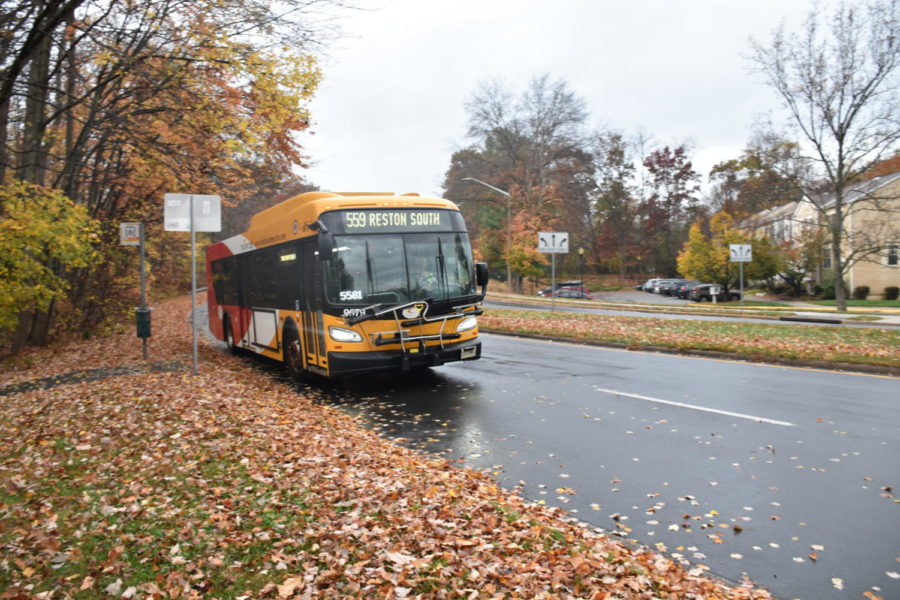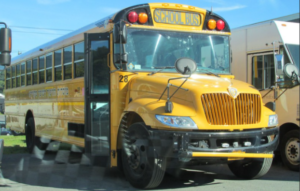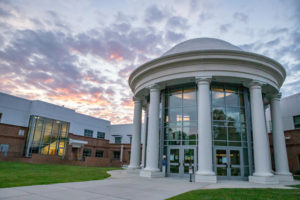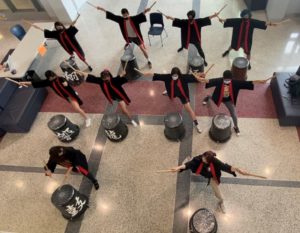The TJ student guide to DC-area public transit
Fairfax Connector buses can carry your bike on their front rack, allowing for more versatile travel throughout the DC area.
August 26, 2022
Ah… the DC metro. Perhaps you’ve used it one time your family walked around in DC or during an outing with friends. Maybe your parents use it to commute to work, but you’re among the 20% of Jefferson students who have never used it before. Either way, to most Jefferson students—the 98% who do not use public transit on a weekly basis—our public transit network is more of a gimmick, useful if you want to get into DC once in a while, or if you want a vibey Instagram story. To this majority of Jefferson students, if you want to get somewhere fast, the answer is a car. But it doesn’t have to be this way!
For many Jefferson students, especially those in Fairfax and Arlington county, public transit is a viable transportation option for day-to-day uses like visiting friends and going to and from extracurricular activities. However, it can be intimidating to get started with transit, especially with the slew of bus schedules, inconsistent sidewalks, and navigation software that indicates your transit trip will take five times longer than it should. If you’d like to lift this veil of intimidation, here’s a step-by-step guide to help Jefferson students get started with Northern Virginia’s transit system:
1) Does this work for me?
If you live in a neighborhood with consistent or semi-consistent sidewalk availability, and/or access to a trail system via low-traffic neighborhood roads, it is likely that public transit is an option for you – in these cases, a bus stop is likely just a short walk or bike ride away. If you live somewhere with exclusively fast roads and no sidewalks, it may not be an option, unless you are able to rely on parent rides to a bus/metro stop or transit hub.
2) Learn the System
You may look out of your window and think: how could I ever use transit here? But public transit may be more accessible than you think. In my case, I live off a fast, dangerous road in Oakton, VA, but a single trail leading to a bus stop became a lifeline for me. I could bike to the bus stop and easily transport it on the bus, allowing me to go practically anywhere.
If you want to begin using public transportation, look at the Fairfax County public transit map (equivalents exist for Loudoun, Arlington, and Prince William), and find your desired origin and destination points. Then, find the nearest bus routes and look up their schedules. Apps like Transit and Google Maps also include bus routes and can be great for trip planning.
If a route is too far from your destination, fear not! You can often bike to bus stops or transit hubs using this bike map to find a safe route for you. All buses and metro trains in the DC area are designed to carry your bike, which makes cycling and public transport a very powerful combination. This potential of biking is overlooked by services such as Google Maps, resulting in estimates that are overblown – a trip that Google indicates will take one hour and 45 minutes with walking and public transportation, for example, may only take one hour if cycling, instead of walking, is used for last-mile transportation.
A few bus lines useful for TJ students are the 29N, 29K, and 17B metrobus routes, which run directly from Jefferson to Vienna, Fairfax City, and Burke respectively, and can get you home from extracurricular activities on days when late buses are not provided. These are especially useful when you incorporate the tip of using other modes of transport together with buses: even if you don’t live next to a bus stop on one of these routes, a parent may be able to pick you up from one, which is more convenient for them than driving all the way to Jefferson.
Some other useful routes for Jefferson students are Fairfax Connector’s 834 and 306 and metrobus 29G, which together run express, all-day service between Jefferson and the Pentagon bus/metro terminal in 18 minutes. From there, it is a five minute metro ride from DC. This allows students who hope to spend a Friday evening in DC, for example, to easily get there after school without relying on a car. The Pentagon bus terminal is also a major hub for express buses throughout the region, with routes to Woodbridge, Manassas, Haymarket, Reston, Springfield, and more, as well as metro access to destinations throughout the region. If you are stuck in a situation where you stayed behind for an extracurricular activity on a day with no late buses, it’s very likely you can get home, or close to home by connecting through the Pentagon. This is also faster than you may expect. The bus from the Pentagon to Woodbridge, for example, is only 30 minutes.
3) Make a plan
However you plan to use public transport, make sure you look at the schedule beforehand. This is especially important if you plan to transfer from one bus or metro line to another: if you are flexible on when you leave, you can find a departure on the first bus or train that is well coordinated with a departure on the next bus or train.
Bus-tracking is also quite useful. All Fairfax Connector and Metrobus vehicles (including both buses and trains) are tracked through BusETA, BusTracker, and Google Maps. This way, you can know if a bus or train is running late, and plan accordingly.
4) Convince Your Parents
Public transit is often considered dangerous, and is stigmatized for that reason. You may think that for this reason, public transit by yourself or with friends is off the table. However, the situation is more nuanced than this. A quick glance at the WMATA crime statistics page will show you that kidnapping, rape, and murder each happen fewer than five times times per year, a low count for a system with a ridership of 237 million yearly. While other serious crimes do occur, their frequency is still comparatively very low in relation to the system’s ridership. The Virginia portion of the metro system is also the safest of them all, with 22.4% of the system’s ridership, but only 9% of the crimes. For comparison to other modes of transportation, our region’s roads have over 40,000 accidents per year, killing 282 people and injuring thousands more.
While, like everything, there is some risk on public transit, it is not greater than what you would experience in a car. Pepper spray and other mitigation factors can also be carried on transit to further reduce risk. Still, you or your parents may be uncomfortable, and in that case, riding with a friend is a great option, and will still be useful if you know people in your neighborhood, or are heading somewhere from Jefferson after school.
5) Go!
Assuming you’re now armed with transit expertise and parental permission, go on whatever transit trip you want! Enjoy your newfound freedom.









